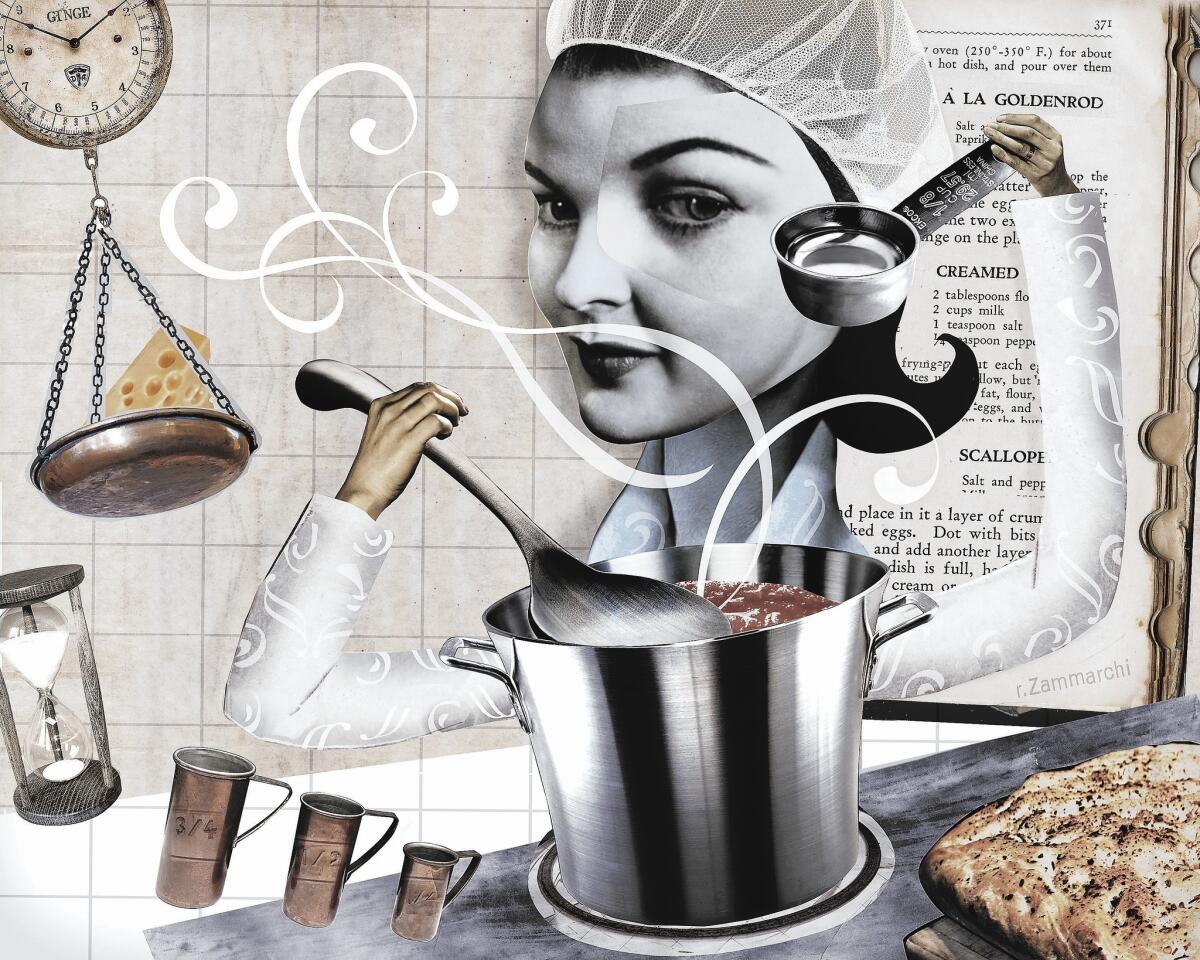If the recipe hasn’t been tested, can you trust it?

- Share via
These days, anyone can type up a recipe and post it online. A recent Google search for “chicken recipes” turned up over 78 million results. But you’d be surprised how many recipes are published without being tested, both online and in print. Of those 78 million online recipes, how many are reliable — not to mention the chicken recipes you might find in the latest new cookbook? Recipe testing, the act of making a recipe — repeatedly sometimes — to fine-tune the method and ensure consistent results, is a vanishing art.
“It’s more important than anything to be able to trust the author,” said Rose Levy Beranbaum in a recent phone conversation. The legendary baker and award-winning cookbook author was discussing the importance of recipe testing. “When a recipe doesn’t work, people often blame themselves.”
This proliferation of questionable recipes highlights the importance of recipe testing, which is both a science and an art. When you test a recipe, as we do here in our Test Kitchen, which I’ve run for the last decade, you trouble-shoot problems, eliminate errors, fix inconsistencies — and sometimes you make an insane amount of focaccia.
I love to recount the story of testing the bread recipe by Nancy Silverton, the James Beard Award-winning restaurateur, chef and cookbook writer.
“You’re tired of it, aren’t you?” Silverton joked one evening. I’d brought the final test batches of the focaccia recipe to her at her restaurant Mozza. We’d tested her recipe repeatedly over two weeks in the Test Kitchen, fine-tuning everything from the amount of yeast to the proper percentage of protein in the bread flour to get the texture just right (Silverton used flour flown in from Italy at the restaurant, and we had to find a suitable alternative). After 43 tests, she was happy with our results: a richly flavored focaccia with a crisp but delicate crust, strong enough to support a variety of toppings while still maintaining a light and airy structure. Me? I was pleased, but also tired of focaccia.
“Cecily Brownstone told me, ‘Never be a typewriter cook,’” recalls Beranbaum of a conversation she once had with the former food editor of the Associated Press. A typewriter cook is someone who writes a recipe without testing it. “You can’t imagine what you’ll find until you test it. I’m ruthless when it comes to testing.”
Not everyone has their own professional test kitchen. “All of the recipes on the blog are tested by me,” says Hank Shaw, cookbook author and writer of the award-winning blog Hunter Angler Gardener Cook. “For my books, I work with other testers. Getting a recipe ready for prime time is a whole other thing. You’ve only got one shot.”
Shaw, like a number of writers, employs what he calls “citizen testers” to test his recipes. The testers follow a strict format, following the recipe exactly as written, and reporting in detail about their results. Beranbaum and Michael Ruhlman also have used and note the importance of volunteer home cooks in the testing of recipes. (For years, I relied on groups of culinary school interns to help test recipes in our Test Kitchen.)
Testing recipes can be challenging. “I can make the same recipe in the same kitchen using the same ingredients and the same equipment, and still it comes out differently each time,” says legendary Italian cookbook author and chef Lidia Bastianich. The Emmy Award-winning television host and restaurateur personally tests all of her recipes before they go to print. Even still, “cooks need to learn to trust their senses.”
Often, when I receive recipes from restaurants or chefs, they are written in a sort of shorthand — cryptic notes to remind the line cooks how to prepare a dish for service. Whole components may be left out, or the recipe is structured in such a way that it works in a restaurant setting where the dish can be quickly assembled for a customer, but makes no sense in the home kitchen.
Knowing your audience, and adapting as necessary, is key. It’s not uncommon for me to hear from a reader in Virginia, Canada or South Africa with questions about a particular method or ingredient. A good recipe tester will take into account variations and inconsistencies in equipment, including types of ovens. Likewise, not many home cooks have a chinois, a high-speed blender — or a Pacojet.
It’s the same with ingredients: A certain Vietnamese herb may be available at certain markets in Los Angeles, but not necessarily in other parts of Southern California, let alone to a reader in a small town in Kansas. And most importantly, giving visual or other sensory indicators in a recipe are key. It’s not enough to say to bake a cake for 30 minutes; a recipe must explain how it will look and feel. Not every oven, baking dish and kitchen environment are the same — even relative humidity can affect timing.
So a recipe tester needs to trouble-shoot, to solve problems and to anticipate variations in products, equipment and — very importantly — experience. But for all the work that goes into that testing, there’s only so much you can do — because sometimes as crucial as it is to test a recipe, it’s also important to follow it. I’ve had readers email me to tell me that a cake didn’t work out, only to find they’ve given up sugar and used agave syrup instead, or they’re going gluten-free and substituted ground nuts for regular flour.
And then there was the time I wrote a story about and recipes for an elaborate homemade gingerbread house. A reader sent me this question: “If I superglue it together, can I still eat it?”
More to Read
Eat your way across L.A.
Get our weekly Tasting Notes newsletter for reviews, news and more.
You may occasionally receive promotional content from the Los Angeles Times.











